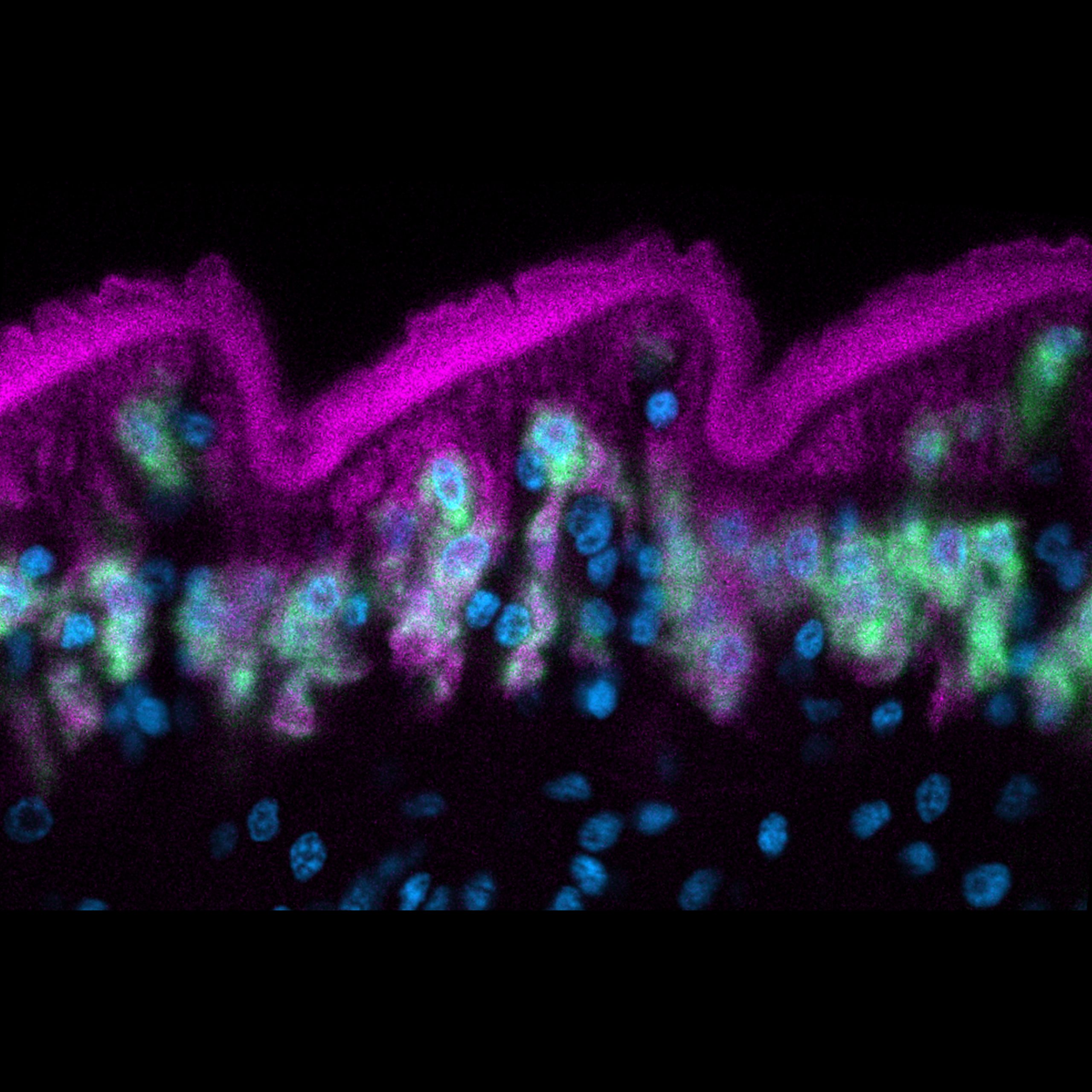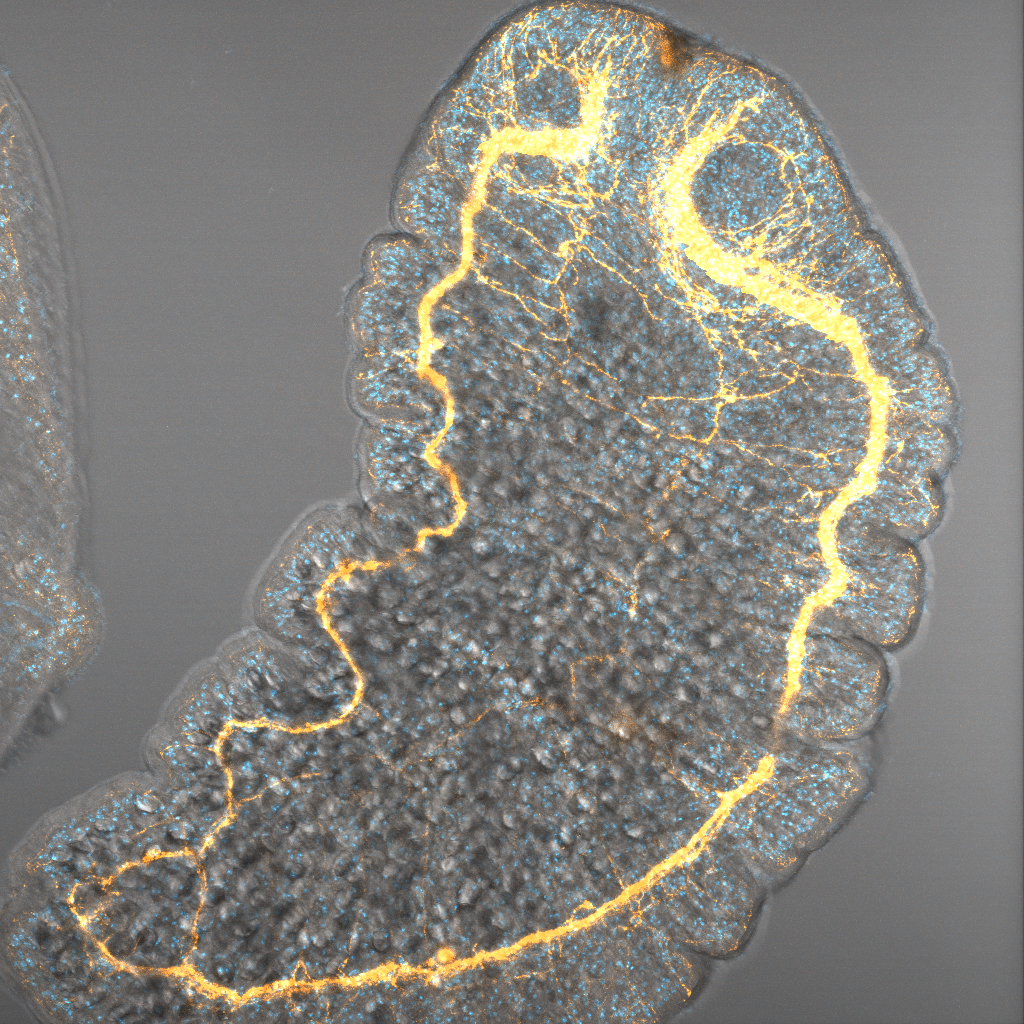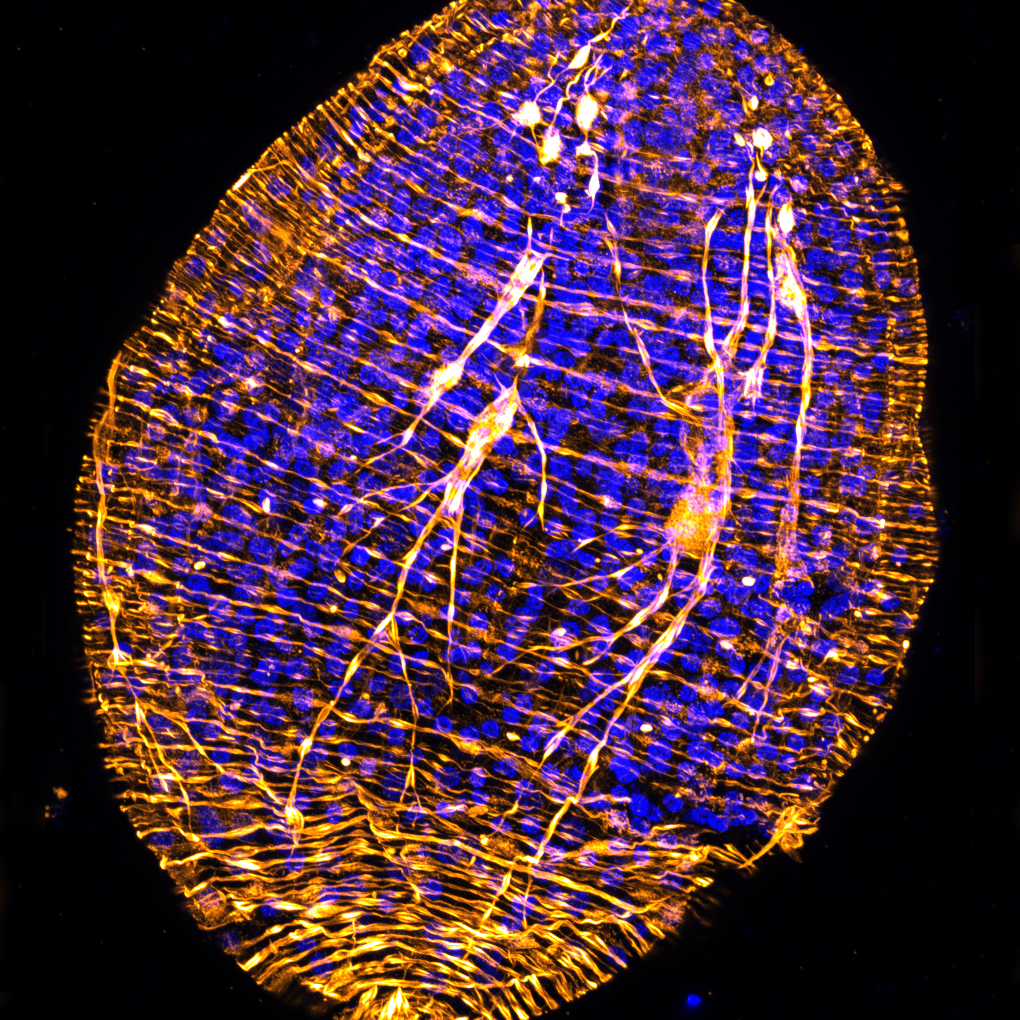Our experimental model
Hymenolepis microstoma
In our laboratory, many of our lines of research are based on the study of the model tapeworm species Hymenolepis microstoma.
Unlike Echinococcus granulosus, Hymenolepis microstoma can be easily maintained in the laboratory using its natural hosts (mice and beetles), and it does not represent a biohazard to human beings. This allows us to study all of the life stages of its life cycle.
Research
Organization and composition of the tegument
Organization and composition of the tegument Unlike most animals, parasitic flatworms are covered by a syncytial tegument (a giant cell with many nuclei) instead of a typical epidermis. All interactions between cestodes and their hosts occur through the tegument, including the absorption of nutrients, since [...]
Neuropeptides in cestodes
Neuropeptides in cestodes Neuropeptides are small peptides (short amino acid chains) used by neurons to communicate to each other and with other cells. We study neuropeptides in cestodes as signals regulating their life-cycle transitions, including changes in their behavior and development. Neuropeptides in parasitic [...]
Cell proliferation and differentiation in the life cycle of cestodes
Cell proliferation and differentiation in the life cycle of cestodes We study cell proliferation and differentiation during the life-cycle transitions of cestodes. In particular, we study their larval metamorphosis, in which the oncosphere (first larval form) transforms into the metacestode (second larval form). In this process, [...]


